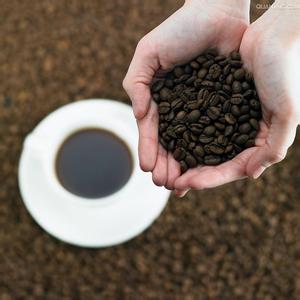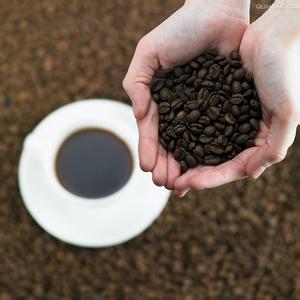Processing method of taste characteristics of story hand-made flavor description in Kenyan coffee bean producing area
Flavor description of coffee bean producing areas in Kenya. Introduction to the manor by treating the characteristics of varieties.
Kenyan coffee varieties
Bourbon Bourbon was first brought to Kenya for planting. In the 1950s, the then agricultural research institution Scott Laboratory selected two excellent hybrids, SL-28 and SL-34, through unremitting efforts, subverting the long-standing prejudice of artificial breeding without excellent natural varieties. SL-28 and SL-34 help Kenyan coffee to form its own unique flavor characteristics and establish a perfect reputation in the coffee industry.
Like the choice of other coffee producing countries, although SL-28 and SL-34 have stood the test of time and cultivated generation after generation of faithful pumps for Kenyan coffee, the Kenyan government and the Coffee Research Institute (Coffee Research Foundation) have begun to promote a new variety, Ruiri 11, for the sake of coffee yield and disease resistance. The promoters assure coffee lovers that the new variety still has the classic flavor of Kenyan coffee. However, the continuous efforts have not won the recognition of coffee gluttons, who agree that the new varieties lack taste and that the future of Ruiru11 remains to be seen.
In addition to the prestigious traditional Arabica coffee, robusta coffee is also produced in the western lowlands of Kenya.
Coffee cultivation in Kenya
Mainly by large farms (Estate) and cooperatives (Cooperatives) two types. The former generally has a large planting area and has independent coffee processing facilities. Most coffee production is done by a large number of small farmers, who form coffee cooperatives. The Coffee Cooperative Society employs special managers to supervise the coffee processing of its members, even to the point of managing each coffee tree.
Compared with shading planting in many high-quality producing areas, Kenyan coffee is obviously more spicy and unrestrained, and shade trees are not common. In addition, Kenyan coffee rarely participates in certification, variety and environmental factors make the use of pesticides necessary, and organic certification, which is popular in other countries, becomes rare in Kenya.
Kenyan coffee harvest season
There are two harvest seasons in Kenya, the main harvest season is from October to December and the secondary harvest season is from May to July.
Kenyan coffee processing
Large farms usually have independent treatment facilities. A large number of small farmers usually pick ripe coffee fruits by hand. Coffee picking is a labor-intensive job that requires the whole family to deploy and even hire workers during the harvest season. The fresh fruit of the picked coffee needs to be delivered in time to the cooperative-owned coffee processing plant for pulping, which may be carried by ox carts, pick-up trucks or trucks. After peeling, Parchment coffee is briefly kept in the cooperative's processing plant and sent to a privately owned factory for shelling treatment.

Important Notice :
前街咖啡 FrontStreet Coffee has moved to new addredd:
FrontStreet Coffee Address: 315,Donghua East Road,GuangZhou
Tel:020 38364473
- Prev

Are Colombian coffee beans grown in the Andes? Introduction to the description of brand taste and flavor
Are Colombian coffee beans grown in the Andes? Introduce coffee is the pride of Colombians, Colombians like to talk about a few things, in addition to their football, which was once among the best in the world, is the coffee they are proud of. Drinking coffee in Colombia is a kind of enjoyment, not only essential three times a day, but also full of streets and alleys.
- Next

Variety introduction of taste treatment method for flavor description of coffee manor in Ethiopia
The history of coffee in Kenya is not long. Arabica coffee varieties were introduced at the beginning of the 20th century, and more Bourbon varieties from Brazil were cultivated later. In the early British colonial period, a perfect cultivation management system was established for the Kenyan coffee industry. Temperatures are lower in the mountains of Kenya at high elevations.
Related
- Detailed explanation of Jadeite planting Land in Panamanian Jadeite Manor introduction to the grading system of Jadeite competitive bidding, Red bid, Green bid and Rose Summer
- Story of Coffee planting in Brenka region of Costa Rica Stonehenge Manor anaerobic heavy honey treatment of flavor mouth
- What's on the barrel of Blue Mountain Coffee beans?
- Can American coffee also pull flowers? How to use hot American style to pull out a good-looking pattern?
- Can you make a cold extract with coffee beans? What is the right proportion for cold-extracted coffee formula?
- Indonesian PWN Gold Mandrine Coffee Origin Features Flavor How to Chong? Mandolin coffee is American.
- A brief introduction to the flavor characteristics of Brazilian yellow bourbon coffee beans
- What is the effect of different water quality on the flavor of cold-extracted coffee? What kind of water is best for brewing coffee?
- Why do you think of Rose Summer whenever you mention Panamanian coffee?
- Introduction to the characteristics of authentic blue mountain coffee bean producing areas? What is the CIB Coffee Authority in Jamaica?

